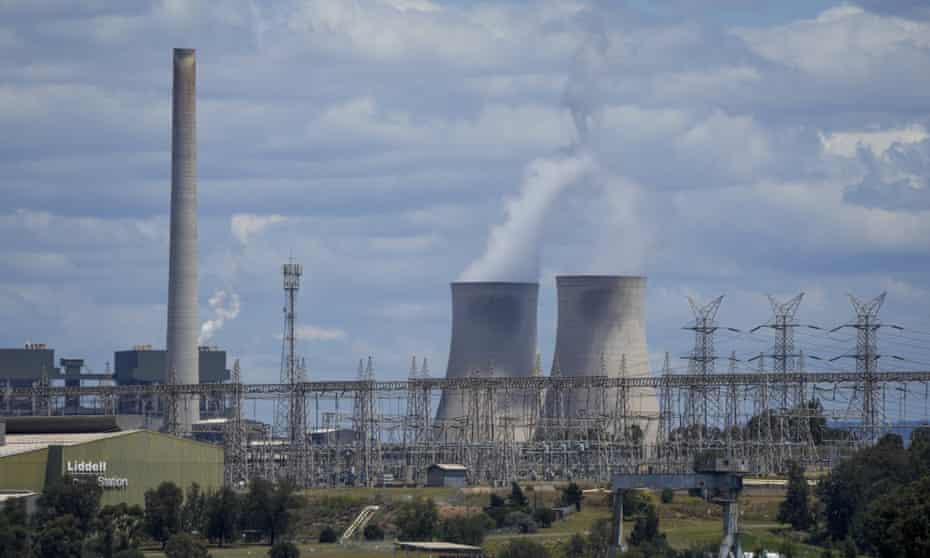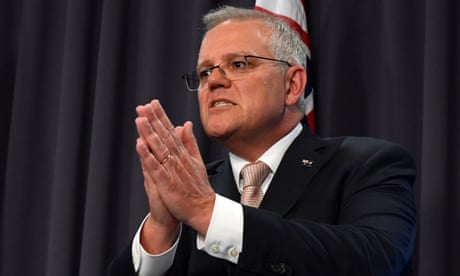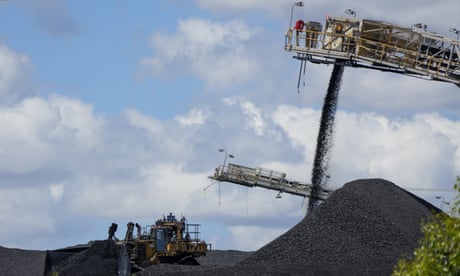Extract from The Guardian
The modelling released on Friday afternoon also relies on offsets and unknown future technology for a large part of emissions cuts.

The Liddell coal-powered generator in Muswellbrook in NSW. The modelling shows the coal sector will halve in value.
First published on Fri 12 Nov 2021 17.42 AEDT
Modelling of the Morrison government’s strategy to reach net zero greenhouse gas emissions by 2050 shows its “technology not taxes” plan will leave the nation relying on offsets and unknown technology breakthroughs, but leave the gas sector to grow.
Released on Friday afternoon, the modelling report suggests the “net zero” plan will see the value of the coal industry drop by half by 2050.
The 100-page report reveals a swathe of assumptions made in the modelling to lend the plan credibility, which left some analysts puzzled.
Under a catchphrase “The Australian Way”, prime minister Scott Morrison released the long-term emissions reduction strategy last month after confirming the government would adopt a net zero target by 2050.

That plan included no new policies, and instead relied on voluntary actions and government backing of technology to cut emissions.
But the modelling report shows the government’s technology plan falls 215Mt short of reaching only an 85% reduction by 2050. Australia’s current annual emissions are at 494.2m tonnes.
The remaining cuts are made by buying offsets and from “further technology breakthroughs” that are not explained.
Left out of the modelling, the report says, is any assessment of the impacts of the climate crisis “or the benefits of avoided climate damages associated with differences in global emissions trajectories”.
The report compares the affect of the government’s plan to a scenario where all countries, “except Australia, reduce their emissions to achieve a below 2C global emissions trajectory”.
In a section looking at the impact of the government’s plan on the value of different sectors, the report says by 2050 the gas industry will be 13% higher than it was in 2020 but the coal sector would see a 51% cut.
Emissions reduction minister Angus Taylor said: “The modelling shows that a clear focus on driving down technology costs will enable Australia to achieve net zero emissions by 2050 without putting industries, regions or jobs at risk.”
He said the government had set out a “credible pathway” to net zero by 2050 “while preserving our existing industries, establishing Australia as a leader in low emissions technologies and positioning our regions to prosper.”
Tim Baxter, a senior researcher at the Climate Council, said the report “may as well have been written in crayon”.
He said: “The most striking thing about this modelling is that it predicts the government won’t reach its own net zero by 2050 goal.
Tony Wood, energy and climate change program director at the Grattan Institute, said: “My concern is not that technology can reduce emissions, but it is the very strange way that this has been done.”

According to the report, the results of the government’s technology plan are modelled by assuming a carbon price of $24 per tonne.
Wood said: “That seems extraordinarily low, remembering that the carbon price in place between 2012 and 2014 never got above $22 per tonne, yet Tony Abbott wanted rid of it. But now we presume people will just pay that voluntarily?
“Suggesting that there are all these advancements in technology under the plan, but there are magically none there without it, does not make sense to me.”
Bowen described the long-term emissions reduction strategy as a “scamphlet on net zero”.
“The fact they chose to do so late on a Friday afternoon, without an opportunity for questions from journalists, doesn’t bode well.”
Greens leader Adam Bandt said the modelling showed the government had a plan for “not zero”.
He said: “This is a piece of fiction trying to cover up inaction. Scott Morrison’s climate ambition is so low that he doesn’t even hit net zero in his net zero ‘plan’.
“This is a recipe for climate collapse in Australia, with more extreme droughts, floods and fires.”
No comments:
Post a Comment